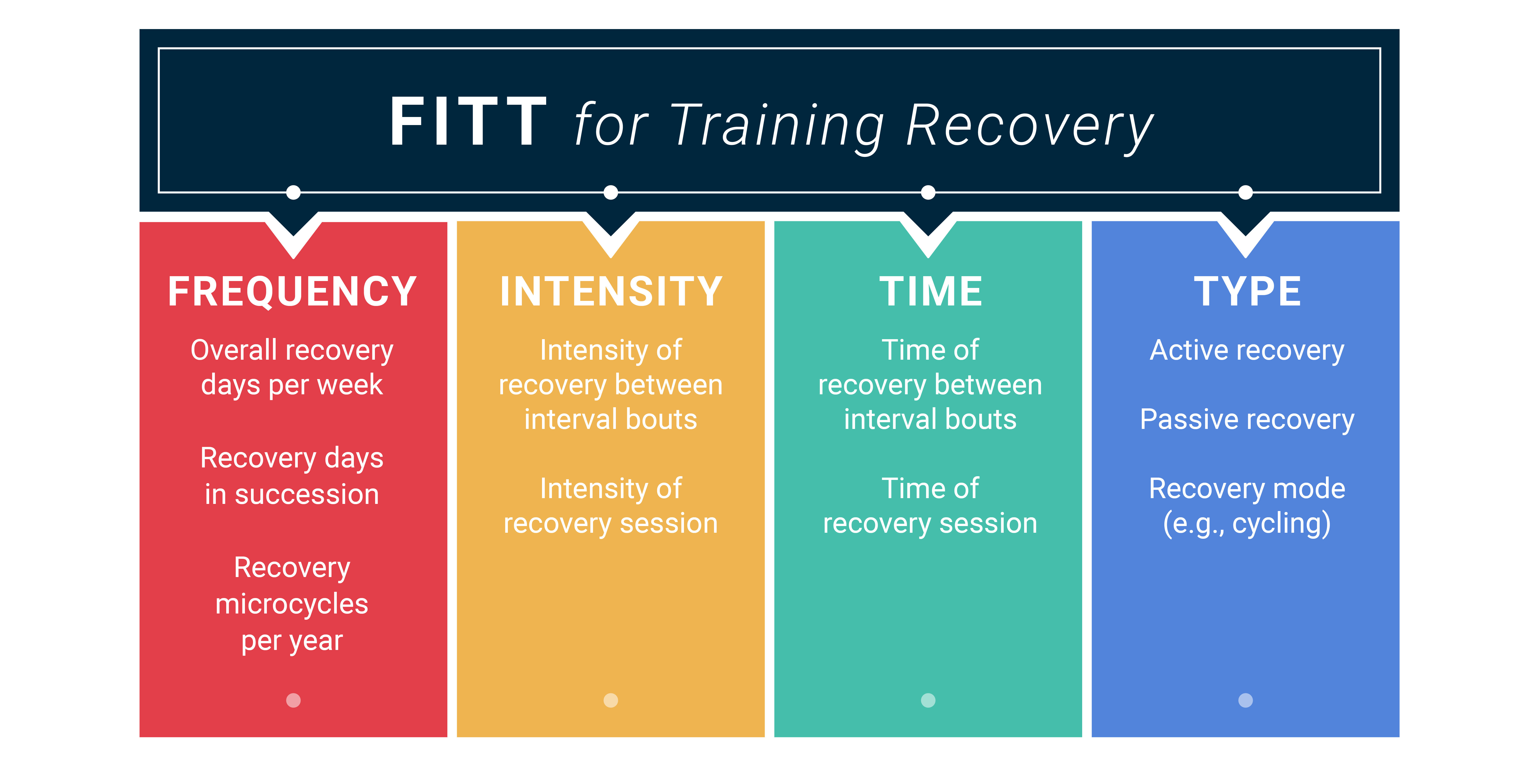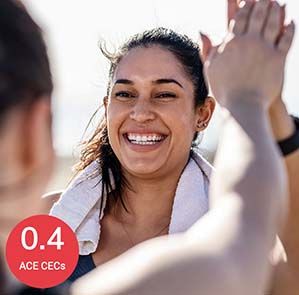
When it comes to human physiology, males and females are distinctly different, so it doesn’t make sense that most recovery guidelines for men and women are basically the same. This article highlights key physiological differences between women and men and provides guidelines for creating effective training recovery recommendations for your female clients.
When it comes to human physiology, males and females are distinctly different. For instance, compared to men, women have a greater percentage of slow-twitch muscle fibers. Additionally, there are significant sex differences in the endocrine, musculoskeletal and other bodily systems. Therefore, it doesn’t really make sense that most recovery guidelines for men and women are basically the same. This article highlights key physiological differences between women and men and provides guidelines for creating effective training recovery recommendations for your female clients.
Sex Differences in Muscle Fiber Types
Skeletal muscle is divided into two types of fibers: type I (slow-twitch) and type II (fast-twitch).
Type I fibers are more efficient than type II fibers at using oxygen to create adenosine triphosphate (ATP), which is the body’s source of energy. This is ideal for endurance exercise, which involves more type I fibers.
By contrast, type II fibers have 10 to 20% greater contractile force than type I fibers. For this reason, type II fibers are ideal for activities requiring speed, such as sprinting, or high-force movements, such as weight training.
The energy systems that correspond with each muscle fiber type also differ. While type I fibers predominantly use mitochondrial respiration, type II fibers predominantly use glycolysis. When studying the rate of fatigue of each muscle fiber, type I fibers are more resistant to fatigue than type II fibers. Research has shown that women have a higher proportion of type I skeletal muscle fibers. The differences found in muscle-fiber proportion between men and women most certainly contribute to varying performance capabilities. For example, several studies indicate that women have a greater resistance to skeletal muscle fatigue when compared to men. It has been suggested that the primary mechanism underpinning these fatigue-resistance differences is the sex-specific differences in type I fibers.
Sex Differences in Substrate Utilization
For a human body to perform any type of exercise, energy—in the form of ATP—is needed and is manufactured by three systems: the phosphagen system, glycolysis and mitochondrial respiration. These three energy systems utilize different forms of fuel, also known as substrates, and produce ATP through different chemical processes. Several key differences exist between men and women with respect to substrate utilization. For example, one study reported that men had a 15 to 32% higher glycolytic enzymatic capacity when compared to women. The same study also found that women had a 15% higher capacity for ß-oxidation (i.e., burning fat) relative to men. Moreover, additional research found that women demonstrate a 4 to 5% lower respiratory exchange ratio (RER) than men during submaximal endurance exercise.
Collectively, these findings demonstrate that women are generally more reliant on fats as a fuel source, whereas men tend to be more dependent on carbohydrates as a substrate for metabolism. These sex differences in substrate selection can be explained, in part, by the dissimilarities in the distribution of muscle fibers mentioned in the previous section.
Sex Differences in Hormone Concentrations
A key hormone that differs greatly in men and women is estrogen. Indeed, women have significantly higher concentrations of estrogen when compared to their male counterparts. During a women’s menstrual cycle, estrogen concentrations fluctuate, with lower levels occurring during the follicular phase (the 14- to 21-day period when the egg is maturing) and higher levels occurring during the luteal phase (the period after ovulation but before menstruation begins). Higher concentrations of estrogen are positively correlated with increased fat oxidation and a concomitant sparing of muscle glycogen. As stated above, fat utilization regenerates ATP at a slower rate relative to carbohydrate oxidation. Overall, these differences in estrogen levels further contribute to greater fatigue-resistance capacities in women.
Sex Differences in Body Composition and Thermoregulation
On average, men have lower body-fat percentages when compared to women, and women typically store body fat peripherally and subcutaneously rather than around the abdominal region. The differences in body composition and adipose tissue distribution underpin important sex-specific differences in thermoregulatory capacity.
Interestingly, research has shown that in a hot environment, men begin to sweat at a lower core temperature, more quickly and at a greater magnitude relative to women. For example, one study had men and women pedal on a cycle ergometer that was immersed in 82.4° F (28.0° C) water for 100 minutes at an intensity of 60% maximal oxygen uptake. Researchers found that men began to sweat at a core temperature of 98.4° F (36.9° C), while women did not begin to sweat until their bodies reached a significantly higher core temperature of 99.0° F (37.2° C).
In another study, subjects performed a 90-minute indoor cycling bout, drank water as needed and were measured for rate and amount of sweat loss. Male participants had a twofold higher rate of sweat loss and twofold greater overall magnitude of sweat loss when compared to their female counterparts. In conclusion, men and women differ in body composition, distribution of adipose tissue and thermoregulatory capacity.
Strategies to Improve Training Recovery in Women
Understanding the concept of recovery is essential for designing effective training programs. As was just discussed, there are notable physiological differences between men and women. This physiological reality should be considered when making recovery recommendations. Consider implementing the following sex-specific strategies to expedite training recovery in your female clients.
1. Recommend Active Recovery
ACE-supported research highlights the superiority of active recovery over passive recovery. Logically, from a physiological perspective, this practice makes sense. Continued blood flow to the skeletal muscle post-exercise promotes the resynthesis of glycogen stores and facilitates removal of metabolic byproducts. However, research suggests that females tend to have lower post-exercise mean arterial pressure relative to their male counterparts. This lower pressure leads to lesser blood flow to the skeletal muscles under resting conditions. As such, recommending active recovery, whether it is immediately after an interval session or the day following strenuous exercise, for your female clients is particularly important.
2. Utilize Cold-water Immersion
As highlighted earlier, throughout the post-exercise period, females tend to display lower thermolytic capacities relative to males. Therefore, the use of cooling recovery strategies such as cold-water immersion following exercise may be particularly valuable for recovery in female clients. In previous ACE-supported research, we found cold-water immersion to be a viable recovery strategy. In particular, the study findings offer important evidence related to both the dose and timing of cold-water immersion, and confirm its value as an effective acute and chronic training recovery strategy:
- Water temperature = 55.0° F (12.8° C).
- Cold water immersion duration = 10 minutes
- Cold water immersion frequency = up to five days per week
- Cold water immersion timing = immediate to two hours post-exercise
3. Encourage Post-exercise Hydration
Given the sex-specific differences in thermoregulatory capacity, it is important to encourage your female clients to focus on intentional post-exercise hydration practices. Following exercise, the goal is to correct any fluid imbalances that occurred from exercising. This includes consuming water to restore hydration, carbohydrates to replenish glycogen stores, and electrolytes to speed rehydration. If a female client has at least 12 hours to recover before the next workout, rehydrating with their usual meals and snacks and water should be adequate. The sodium in food helps the body retain the fluid and stimulates thirst. If rehydration needs to occur quickly, urge your female clients to drink about 1.5 L of fluid for each kilogram (or 23 oz of fluid for each pound) of body weight lost. This is enough to restore lost fluid and compensate for the increased urine output that occurs with rapid consumption of large amounts of fluid.
4. Pay Attention to Post-exercise Protein Consumption
After an exercise bout, the body needs to repair the muscle damage sustained during exercise training. Favorable muscle adaptations and repair to exercise-induced muscle damage are dependent on positive muscle protein balance. This is especially true for female adults who are more prone to negative energy balance. Encourage your clients to follow these recommendations:
- Consume a protein (0.4 g/kg/hr) plus carbohydrate (~1.0 g/kg/hr) mix immediately post-exercise.
- Consume protein and carbohydrate at 15- to 30-minute intervals.
5. Reduce the Frequency and Duration of Recovery
As a health and exercise professional, you can optimize training recovery by correctly managing the various components—frequency, intensity, time and type—of your clients’ exercise programs (Figure 1). However, given the physiological differences between women and men, some adjustments may be necessary:
- Female clients likely require less rest between interval bouts when compared to their male counterparts. For example, if female and male clients are each performing 8 x 60-second intervals bouts, the female client may be fully recovered between bouts after two minutes of rest, while the male client might require an additional 30 seconds of rest.
- Women also likely require less recovery time between sets of resistance training when compared to men. A similar sex-specific discrepancy for rest periods as just described between interval bouts should also exist between resistance-training sets. Although there is no specific recommendation, evidence suggests that women may require anywhere between 25 and 50% less recovery time.
- Women may require a reduced day of recovery following higher-intensity training sessions. For instance, following a difficult interval session, a female client might be fully recovered after two days of moderate-intensity training relative to a male client who may need three days of recovery.
Figure 1. FITT for Training Recovery

The Take-home Message
Intentional tactics are required to ensure adequate recovery from training that accounts for the unique attributes and needs of clients, especially sex-specific differences in physiology. Consider utilizing these five evidence-based strategies to better optimize recovery with your female clients. As always, it is important to recognize that a purposeful trial-and-error approach is needed, as not all these recovery strategies will be applicable or desirable for everyone. Ultimately, it is up to you to systematically implement and evaluate these various strategies to ultimately pinpoint the recovery strategies that best suits each of your female clients.
Expand Your Knowledge
 |
The many life cycles of a woman are powerful and unique—and when your training techniques reflect that, they’ll get the most optimal results. The Strategies for Training Female Clients course bundle presents a holistic approach to improving your female clients’ fitness regimen and overall health by ¬¬helping you to understand their current stage in life, along with their health and fitness goals.
|





 by
by 




